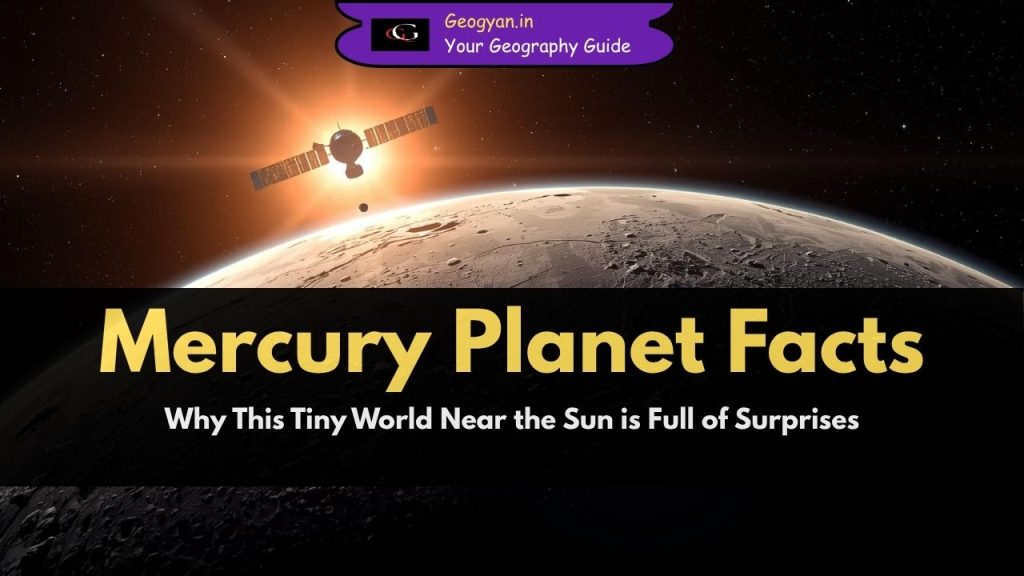Estimated reading time: 3 minutes

Table of contents
Recent News on Mercury
In September 2025, scientists from NASA’s BepiColombo mission reported new images of Mercury’s volcanic plains and mysterious magnetic field. These findings are helping astronomers understand how the smallest planet in the Solar System still holds clues about Earth’s early history.
What Makes Mercury Unique?
Mercury is the closest planet to the Sun and also the smallest planet in the Solar System. It orbits the Sun at a distance of only 58 million km, completing one revolution in just 88 Earth days, making it the fastest planet. Despite being close to the Sun, Mercury experiences extreme temperatures ranging from -173°C at night to 427°C during the day.
Where is Mercury Located in the Solar System?
Mercury is the first planet from the Sun. It lies between the Sun and Venus. Due to its proximity, it is often visible just before sunrise or after sunset, appearing as a bright star-like object in the sky.
Key Physical Features of Mercury?
- Diameter: 4,879 km (smallest planet)
- Surface: Rocky, covered with craters, ridges, and plains, resembling Earth’s Moon
- Atmosphere: Very thin, called exosphere, made of oxygen, sodium, hydrogen, helium, and potassium
- Gravity: About 38% of Earth’s gravity – a person weighing 60 kg on Earth would weigh only 23 kg on Mercury
- Magnetic Field: Surprisingly strong for a small planet, suggesting a partially molten core
Why is Mercury Known as the Fastest Planet?
Mercury completes its orbit in 88 days, making its year the shortest among all planets. However, due to its slow rotation (59 Earth days), a single day-night cycle lasts 176 Earth days – meaning a day on Mercury is longer than its year!
What Makes Mercury’s Climate Extreme?
- No thick atmosphere to trap heat → causes extreme temperature differences
- Day: 427°C (hot enough to melt lead)
- Night: -173°C (colder than Antarctica)
This variation makes Mercury a fascinating subject for climate and planetary studies.
What Did MESSENGER and BepiColombo Discover?
- NASA’s MESSENGER mission (2011–2015): Discovered water ice in permanently shadowed craters at Mercury’s poles.
- ESA–JAXA BepiColombo mission (launched 2018): Still en route, expected to arrive in 2025–2026, studying Mercury’s surface, magnetic field, and exosphere.
Quick Facts Table
| Feature | Details |
| Distance from Sun | 58 million km |
| Orbital Period | 88 Earth days |
| Rotation Period | 59 Earth days |
| Diameter | 4,879 km |
| Gravity | 38% of Earth |
| Atmosphere | Exosphere (thin gases) |
| Temperature Range | -173°C to 427°C |
| Missions | MESSENGER, BepiColombo |
| Special Feature | Water ice at poles |
FAQs
Q1. Why is Mercury called a terrestrial planet?
Because it has a rocky surface like Earth, Venus, and Mars.
Q2. Can life exist on Mercury?
Due to its extreme temperatures and lack of atmosphere, life is not possible on Mercury.
Q3. Why is Mercury difficult to observe?
It is always close to the Sun, making it visible only at sunrise or sunset.
Q4. What is Mercury’s significance in astrology?
In Vedic astrology, Mercury represents intelligence, communication, and logic.





























